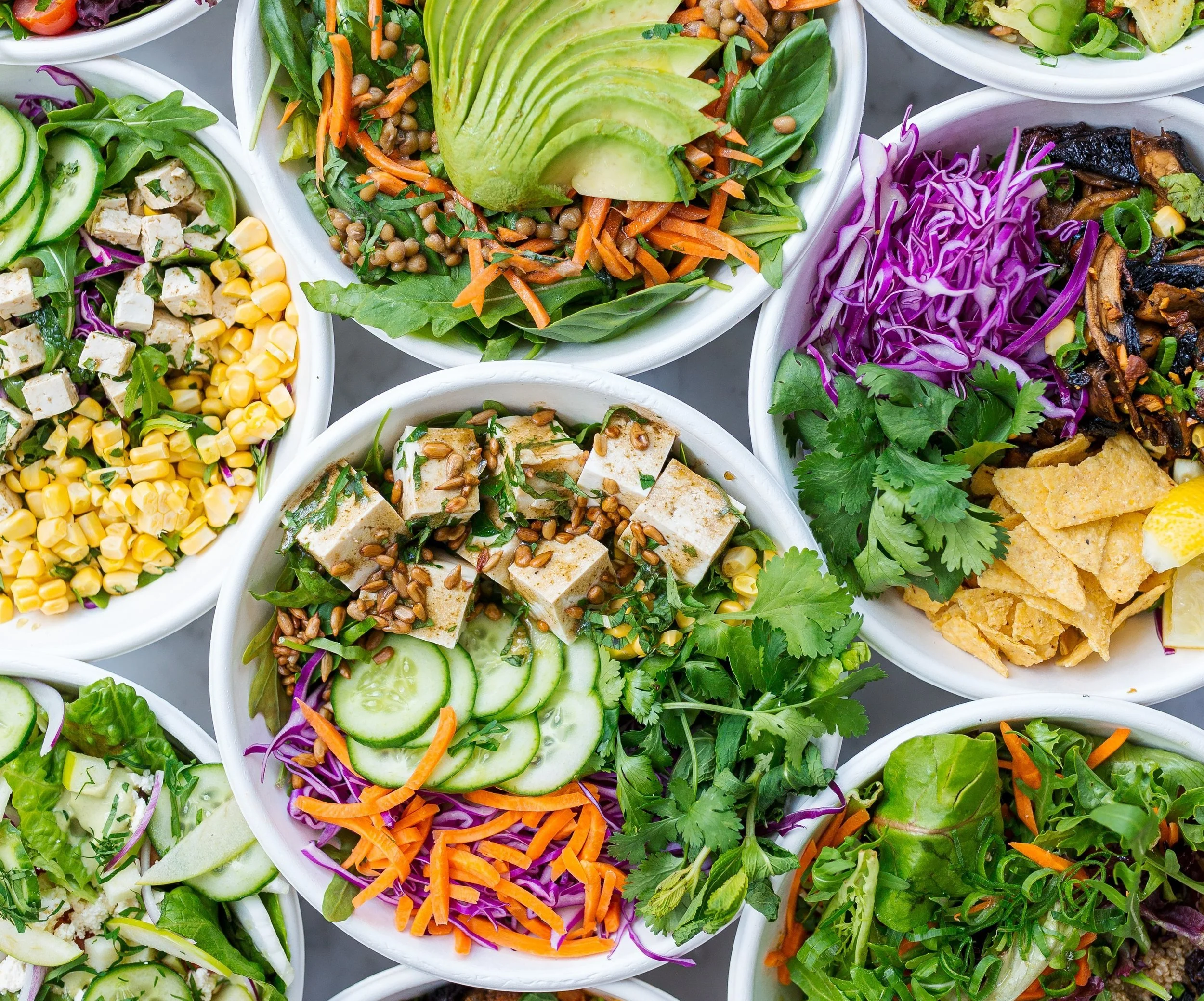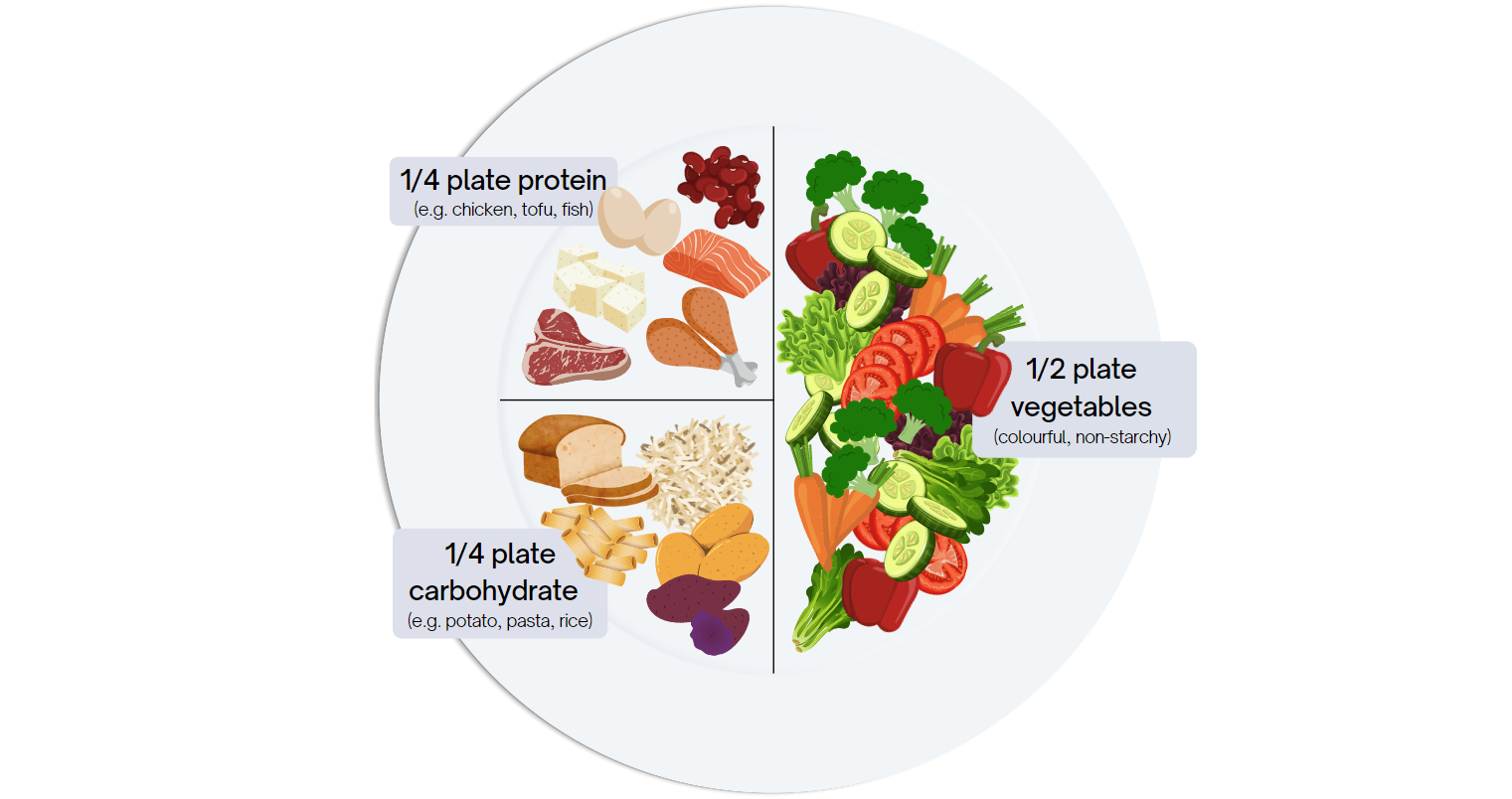How to Build a Balanced Plate
Are mealtimes at Tibbs House different from what you are accustomed to at home? With an array of meals, new and exciting flavours, and self-service stations, it is understandable to feel a bit overwhelmed knowing how to eat a healthy balanced plate.
If that sounds familiar, don't worry! This blog is here to guide you through two key concepts - the Plate Model and serving sizes. These tools will help ensure that you can enjoy your meals while remaining nutritionally balanced.
The plate model
The plate model is an effortless way to get the right proportions of each food group in our meals. To support a healthy life, it is important to have lots of vegetables alongside a balanced amount of carbohydrates and protein. Following the Plate Model helps us boost vitamin and mineral intake while ensuring we are having the right macronutrients (macros) for sustained energy and growth.
As shown below, the Plate Model recommends dividing your plate into three sections: one-half for vegetables, one-quarter for carbohydrates, and another quarter for protein. This can be thought about for many different meals and not only on one plate – everything might be mixed together in a wrap, a soup, your salad might be on a separate plate all together. When thinking about the plate model, think of your whole meal.
Take for example when you are making a sandwich for lunch at Tibbs House. Ask yourself: Are vegetables the main part of your sandwich fillings? Have you included an adequate amount of protein? If not, how can you change your fillings to align with the Plate Model?
Serving Sizes
A serve is a way to describe a reference amount of food, often used when talking about nutrition. While serving and meal size may vary based on your individual needs, you can use servings sizes to guide you towards a balanced diet.
The Ministry of Health provide guidelines on how many servings of each food group you should have each day. At Augusta, we take pride in providing menus that enable you to fulfil all your dietary requirements. Ultimately, the power lies in your hands to make informed choices and ensure you meet your nutritional needs!
Here is a breakdown of the food groups, serving sizes, and the recommended* daily intake:
Protein
Serving size: About size of your palm | Recommended 2.5 serves per day.
Examples: Red Meat** (Beef, Pork, and Lamb), Fish, Chicken, Tofu, Eggs (2 large eggs).
Nutrition tip: Incorporate a mix of plant and lean animal sources in your diet.
Carbohydrates
Serving size: Approximately the size of your fist | Recommended 7 serves per day.
Examples: Rice, Pasta, Noodles, Bread (1 slice), Wraps, Starchy Vegetables (Potato, Kumara, Taro).
Nutrition tip: Choose wholegrain options where you can for increased fibre and to help digestion.
Vegetables
Serving size: Two hands cupped together | Recommended 5.5 serves per day.
Examples: Leafy Greens, Capsicum, Cucumber, Tomatoes, Beans, Eggplant. For cooked, chopped or canned vegetables a serve is ½ a cup (about the size of a tennis ball)
Nutrition tip: Eat a range of colours when it comes to fruit and vegetables to boost the range of vitamins and minerals you are getting daily.
Fruit
Serving size: Varies | Recommended 2 serves per day.
Examples: Apple, Pear, Banana, or Orange: 1 medium fruit. Apricots, Kiwifruit, or Plums: 2 small. Diced, canned, or frozen fruit: 1 cup.
Milk and Milk Products
Serving size: Varies | Recommended 3.5 serves per day.
Examples: Milk or calcium-fortified plant-based milk: 1 cup. Yoghurt: 200g (¾ cup). Cheese: 40g (2 slices)
By keeping in mind the concepts of the Plate Model and serving sizes, you can embrace a balanced and easy approach to nutrition. Remember, making conscious decisions about your food intake empowers you to take charge of your well-being!
*Based of Ministry of Health Guidelines for males ages 14-18 years old
**Updated guidelines for red meat state that less than 350g should be eaten in a week across 3 meals (approx. 100g/serve).
References
Ministry of Health: New Serving Size Advice https://www.health.govt.nz/system/files/documents/publications/new-serving-size-advice-dec20-v3.pdf
Healthy Food Guide www.healthyfood.co.nz
The Heart Foundation: Food Portions https://assets.heartfoundation.org.nz/documents/shop/nutrition/docs/food-portions-a4.pdf?mtime=1667526708?1691029188
The Heart Foundation: Red Meat and Poultry https://assets.heartfoundation.org.nz/documents/shop/nutrition/docs/red-meat-and-poultry-position-statement.pdf?mtime=1667526709?1691030269


